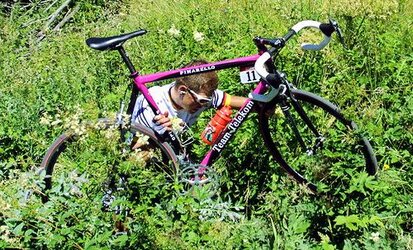The riders are worried about descending the Crostis before the Zoncolan apparently, following Weylandts' death.
It was under review by the organisers but is still in I think.
Here's a vid of the descent with ski-type barriers to safeguard the most dangerous drop-offs.
View: http://www.youtube.com/watch?v=Zv-j9c7dmzg&feature=youtu.be
Not sure I'd fancy it at high speed, on rough road in dodgy weather but maybe that's a reaction to WW's tragic accident.
It was under review by the organisers but is still in I think.
Here's a vid of the descent with ski-type barriers to safeguard the most dangerous drop-offs.
View: http://www.youtube.com/watch?v=Zv-j9c7dmzg&feature=youtu.be
Not sure I'd fancy it at high speed, on rough road in dodgy weather but maybe that's a reaction to WW's tragic accident.



